AMD Radeon Live Blog - AMD Presents: The New Era of PC Gaming
by Ryan Smith & Brandon Chester on June 16, 2015 12:00 PM EST
12:05PM EDT - AMD is talking about the rise of e-sports gaming
12:06PM EDT - Display resolutions are rapidly increasing. 4K monitors have dropped from $3000 to $400-600
12:06PM EDT - Smooth frame rates have become another area of focus, in addition to simply having a high frame rate
12:07PM EDT - Virtual reality is also an area that AMD sees as rapidly expanding
12:07PM EDT - VR requires exceptionally high frame rates and low latency
12:08PM EDT - Okay, after some WiFi problems we';re here
12:08PM EDT - Now on stage: Devin Nekechuk to introduce the Radeon 300 series
12:09PM EDT - AMD is starting off by talking about the R7 and R9 300 series cards.
12:09PM EDT - First up, R7 360
12:11PM EDT - AMD is discussing VSR. Not exclusive to the 300 series though.
12:13PM EDT - First card is the R7 360, the base of the line.
12:13PM EDT - R7 370 is next. $149 and up to 4GB of VRAM. Not clear if those two go together, as they said "up to"
12:14PM EDT - Now moving onto cards for more intensive games, and for gaming at higher resolutions
12:15PM EDT - Next is the R9 380. AMD claims it can power 1440p. Starts at $199, up to 4GB VRAM.
12:15PM EDT - R9 390 and 390X start at $329 and $429. Both have 8GB of GDDR5. Meant for 4K gaming
12:17PM EDT - Now talking about DX12
12:17PM EDT - DX12 launching with Win10, July 29th is not far away
12:18PM EDT - AMD now inviting up some game developers and a Microsoft developer
12:19PM EDT - Developers seeing significant CPU usage reductions with DX12
12:21PM EDT - Now talking to the developer from Lionhead about DX12 in the Fable series
12:22PM EDT - Asynchronous shaders to execute shading concurrently with other rendering are an important feature
12:23PM EDT - Windows 10 beta of Fable Legends coming in the near future.
12:24PM EDT - Now on display: Stardock/Oxide's Ashes of the Singularity
12:24PM EDT - Now talking about RTS games
12:25PM EDT - Oxide is going to be one of the first companies to really use DX12. They're looking to push a lot of draw calls
12:25PM EDT - RTS games have traditionally had to swap to 2D sprites when characters are too far away. Not required with DX12.
12:26PM EDT - CPU power freed up by using DX12 can be put into making more complex AI
12:27PM EDT - Alpha this Thursday
12:27PM EDT - Now moving onto VR. AMD's Richard Huddy is back on stage
12:29PM EDT - Anuj Gosalia of Oculus is talking
12:30PM EDT - AMD is going to be banking hard on VR for this generation. From a business standpoint it requires lot of GPU power, and from a tech standpoint they have what should be a good solution
12:31PM EDT - Low latency is the big focus in VR
12:31PM EDT - Now discussing how Oculus is using AMD's LiqudVR tech, which was first announced back at GDC in March
12:32PM EDT - Oculus has been working with AMD to use their LiquidVR tech
12:32PM EDT - Direct hardware access for low latency, multi-GPU per-eye rendering, async shading/warping, etc
12:32PM EDT - Oculus has shipped 150K dev kits (wow)
12:33PM EDT - Oculus has shipped 150,000 dev kits so far
12:33PM EDT - And of course, the final consumer Rift ships in Q1 of next year
12:35PM EDT - For AMD GPUs, Oculus is recommending R9 290/390 and higher
12:35PM EDT - Recommended GPU spec for Oculus is the R9 290 or faster
12:35PM EDT - This is consistent with their earlier developer target recommendation of R9 290
12:36PM EDT - Now speaking, CCP on EVE: Valkyrie
12:36PM EDT - They've been one of the darling early VR demos, and will be shipping on PC and PS4 (Morpheus)
12:37PM EDT - Game will be released alongside the Rift, so Q1 2016 (it)
12:38PM EDT - Huddy now has the stage to himself again
12:38PM EDT - Discussing how VR is being used for non-gaming applications
12:38PM EDT - Now on stage, Katrina Craigwell from GE
12:39PM EDT - GE is using VR for brain imaging visualization
12:41PM EDT - And that's a wrap on GE
12:42PM EDT - Okay, time for the high-end GPU announcement
12:42PM EDT - (If you haven't already seen the leaks, well, then you'll probably be the only person surprised by this)
12:42PM EDT - Now on stage, Chris Hook of AMD. Director of marketing
12:43PM EDT - Leading into a discussion about small form factor PCs
12:44PM EDT - Presenting Project Quantum
12:44PM EDT - A custom SFF case
12:45PM EDT - Contains 2 of AMD's new Fiji GPUs
12:45PM EDT - Processors on the bottom, cooling on the top
12:45PM EDT - Now rolling a promo video
12:47PM EDT - Begun, the Closed Loop Liquid Cooler wars have
12:47PM EDT - The company has clearly taken what they've learned from R9 295X2
12:47PM EDT - Which, though $1500 was a successful product for a dual-GPU card and a solid design
12:48PM EDT - Now on stage, AMD's CEO, Dr. Lisa Su
12:48PM EDT - "Most complex and highest performance GPU we have ever built"
12:49PM EDT - There will be multiple products with Fiji
12:49PM EDT - AMD Radeon R9 Fury X
12:50PM EDT - 1.5x perf per watt of R9 290X
12:50PM EDT - R9 Fury (vanilla) will be air-cooled
12:50PM EDT - Cards will be in stores "very shortly"
12:51PM EDT - AMD Radeon R9 Nano
12:51PM EDT - Fiji in a a 6" card, half the power of 290X
12:51PM EDT - (Sounds like it's significantly cut down from full Fiji)
12:51PM EDT - Nano will be available later this summer
12:52PM EDT - Finally, a dual-GPU card that's in the Quantum, but hasn't been named or shown
12:52PM EDT - Now on stage, Joe Marci, Raja Koduri, and Chris Hook again
12:53PM EDT - Raja is now explaining the human element behind designing Fiji
12:55PM EDT - Focus on 4K and HBM
12:55PM EDT - Specs
12:55PM EDT - 4069 stream processors, 8.9B transistors
12:55PM EDT - 4096 SPs, even
12:55PM EDT - 8.6 TFLOPs, 1050MHz core clock
12:56PM EDT - Also did some work on power management/efficiency, though now going in-depth at this time
12:56PM EDT - Raja is giving special credit to the board design team
12:57PM EDT - Joe now talking a bit more on HBM
12:58PM EDT - AMD has over the last several years been on the cutting edge of memory tech. 2015 and Fiji is no different
12:58PM EDT - HBM gets AMD more memory bandwidth, but also cuts down on memory power, giving them more power headroom for the GPU itself
12:59PM EDT - AMD will be putting HBM in more devices in the future (where costs make sense, of course)
01:00PM EDT - Raja has never been so excited in the last 20 years
01:01PM EDT - Laying the path for the future
01:01PM EDT - They see higher quality VR systems as requiring much, much more GPU performance
01:02PM EDT - The Holodeck concept and Eyefinity seems to have given way to VR and the holodeck on your head
01:03PM EDT - Joe is talking a bit about overclocking headroom. AMD says it should be a good overclocker
01:03PM EDT - Fury X goes on sale on the 24th
01:03PM EDT - $649
01:03PM EDT - Fury (vanilla) for $549 on July 14th
01:04PM EDT - Nano in the summer, dual-GPU card in the fall
01:04PM EDT - So the fight is set: Fury X needs to meet or beat NVIDIA's GTX 980 Ti. AMD is aiming to best NVIDIA's top Maxwell GPU
01:05PM EDT - To close things out, Huddy is back on stage
01:05PM EDT - Will be showing the PC version of Star Wars: Battlefront
01:06PM EDT - DICE's Lead Producer (whose name I couldn't type out fast enough) is now on stage
01:07PM EDT - Frostbite engine game, so they already have all the tech Johan Andersson has been working on
01:07PM EDT - Discussing the production of the game
01:09PM EDT - Rolling PC footage
01:10PM EDT - A very short clip indeed
01:11PM EDT - AMD will have it playable at SDCC next month
01:12PM EDT - Recap time
01:13PM EDT - That's a wrap
01:14PM EDT - Thanks for joining us, everyone







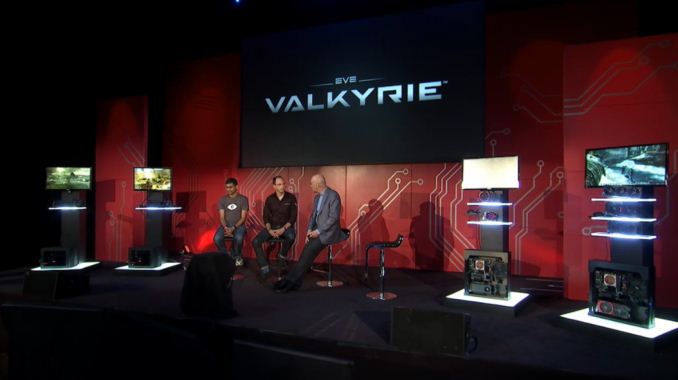

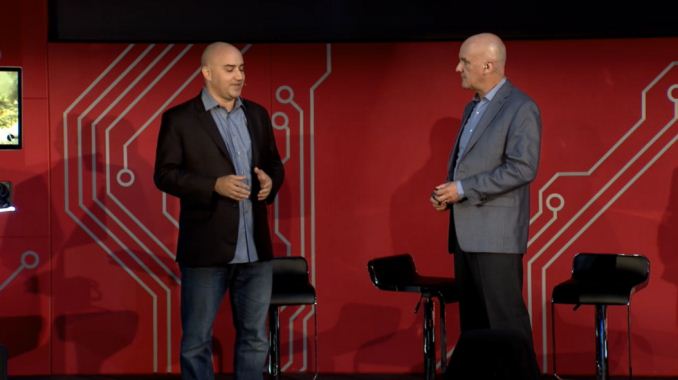
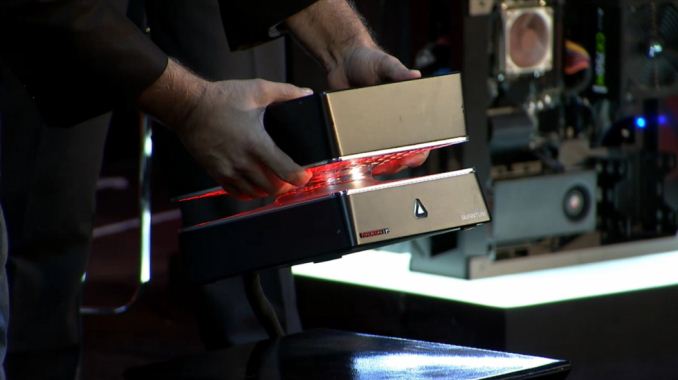
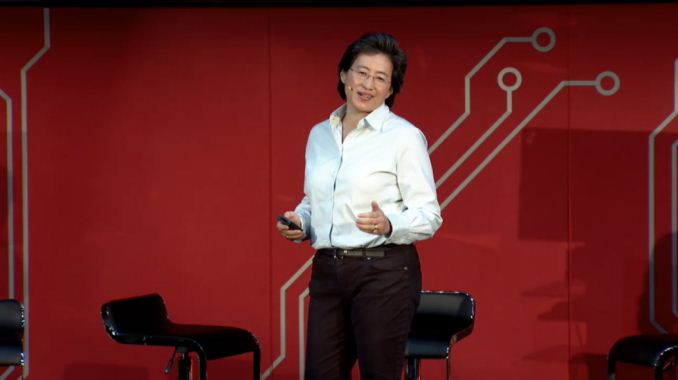

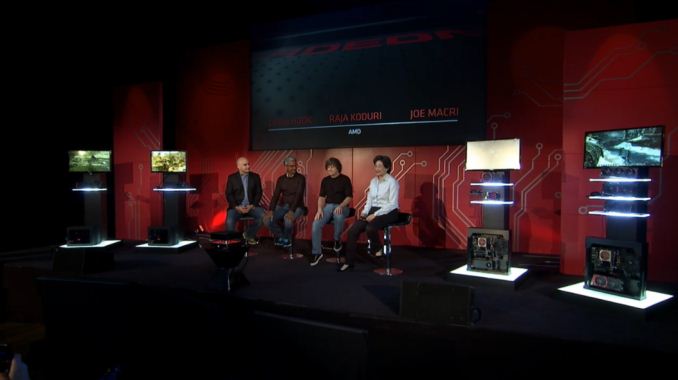
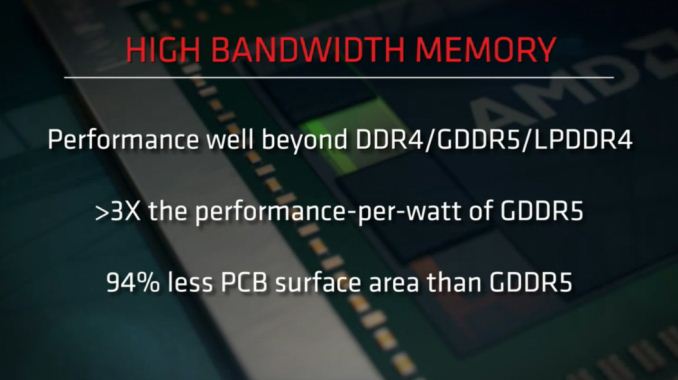
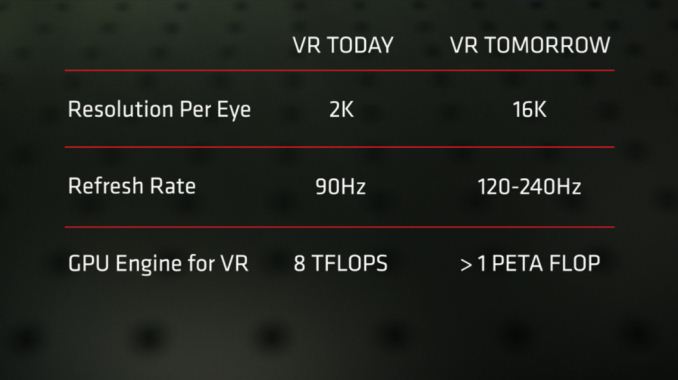










272 Comments
View All Comments
Gigaplex - Tuesday, June 16, 2015 - link
A CPU pulls much more than 85W when overclocked. At stock, you don't need the fancy CPU heatsinks.chizow - Tuesday, June 16, 2015 - link
Definitely not easy, they're already effectively "overclocking" the chip to compete with 980Ti/Titan X so they needed the WCE to accomplish that. Similarly, the NVTTM cooler is basically at its thermal limits at around 275W, it can't overclock much at all and Nvidia has already acknowledged they are evaluating better reference coolers for their top end flagships.mrdude - Tuesday, June 16, 2015 - link
Don't confuse watercooling with excessive TDP and difficulty with aircooling. We've seen horrible cooling solutions on the 290 and 290X from AMD themselves, but their partners also made some really good solutions as well.The Fury X likely has watercooling for two reasons:
1 - Yes, one is the high TDP. WC helps in that respect tremendously, even if it can be cooled with a rather large air cooler (and it can)
2 - The density of HBM + GPU on the same package allows for a significantly decreased PCB, which can also cut costs -- trace, GDDR5 dies, and bus width all increases size and cost of a GPU. Watercooling the entire die, memory and all, is *way* easier than on a traditional GDDR5 GPU.
David Kanter spoke about this in some detail on TR's podcast with Scott Wasson.
chizow - Tuesday, June 16, 2015 - link
@mrdude, I think the point stands honestly, 275W stated typical power draw is extremely high for a single GPU and would erase much of the benefit of some of the bulky custom coolers. I do agree the solution makes sense and I'm using AIO myself on my Titan X's and the difference is tremendous, 40C delta between ref air cooler and AIO. But the point is Titan X and 980Ti didn't "need" the AIO, the can use that thermal headroom for bigger gains, while the Fury X is starting there. We'll see how perf shapes up in the end.mrdude - Wednesday, June 17, 2015 - link
Watercooled Fiji doesn't "need" the AIO either.This argument makes no sense when the Titan X has a 250W TDP and uses an air cooler. And 275W is very easily chewed up by a slight overclock on the Titan X, yet it still doesn't require a watercooler.
Look at the watercooled Fiji PCB and notice how much smaller it is than your Titan X. If you take apart the HSF on your Titan X, you'll also notice that the VRAM and the traces make it impossible to make a smaller PCB while still utilizing regular air-cooling.
The watercooler on Fiji has nothing to do with an extra 25W TDP. That's just plain ol' idiotic. It's to do with the shorter PCB and the HBM being on-package right beside the die.
Your point doesn't "stand." At all. Here's the video to David Kanter's and Scott Wasson's discussion on the matter:
http://techreport.com/review/28246/the-tr-podcast-...
chizow - Wednesday, June 17, 2015 - link
250W is typical for stock Titan X yes, and when you increase power target to 275W you quickly saturate the capability of the stock cooler which quickly raises temperatures to the temp limit of ~85C where the GPU begins to throttle and downclock. Running at these higher temps also increases power consumption due to leakage, I can see this with my 2 cards (one AIO, one Aircooled) that the Aircooled Titan X hits the power limit (1/0) while the AIO cooled one stays at 0 on power limit while running just 43C under load.What does PCB size have to do with power consumption again? I am not even sure what your point is here. The watercooler on the Fiji DOES have a significant impact on total power consumption, did you not see that the aircooled version not only has fewer SP enabled, but it still runs at the same 275W typical board power as the Fury X? Again, we will see quite clearly, that leakage and operating temps are going to play a significant role in how all of these cards behave.
The point is, that without the AIO cooler, Fury X may have only achieved maybe 950MHz if it had to operate at 250W limit using an aircooler, and it most certainly "stands" if you just look at how the non-Fury X behaves. The same behavior was mentioned with 290/X when custom coolers came out, the very high power consumption of the reference blower came down with these custom coolers that kept the GPU at lower operating temps.
mrdude - Wednesday, June 17, 2015 - link
Size has quite a bit to do with power consumption. But that wasn't my point. I was referring to the size of the PCB and the cooling required. Fiji doesn't need a large PCB, thus it can decrease the PCB and allow for smaller form factors. In order to do so, AMD had to utilize a watercooler because a smaller PCB wouldn't allow for a heatsink large enough to dissipate the required heat. This is a choice AMD made that nVidia doesn't have, at least with GPUs that are roughly the same TDP. nVidia can't fit a Titan X or 980Ti into a form factor that's the size of Fiji. The 970 was possible, sure, but not even the 980 isn't available in that size.As to your other point regarding the HSFs being ineffective at 275W TDP -- that, too, is nonsense. The R9 290X non-reference cards dissipate even more heat than Fiji and Titan X and do so with an air cooler. The limiting factor for Titan X is the blower design and not the TDP. Non-reference 290X coolers with triple or double-fans dissipate more heat and tend to do so more quietly than the Titan X's blower style cooler. And, again, AMD could have opted for that once more but instead chose to decrease the size of the GPU which meant they required watercooling.
The one argument you can make regarding the use of watercooling is maybe the inconvenience factor, but it also allows for smaller form factors that would otherwise be impossible. The one aspect AMD overdid was the cooling capacity of their watercooling solution. 500W for a GPU that at max power can only consume 375W seems more than a bit excessive.
chizow - Wednesday, June 17, 2015 - link
Again, how is size an important factor when the much larger PCB on the Titan X/980Ti are rated for 250W while the tiny Fiji board rates 275W? Oh right, because the GPU is the primary determinant factor, not size. The PCB size has NOTHING to do with the need to use watercooling, they can and will be using an air cooler on the Fury, if they are worried about size, they can just use a blank PCB extension like many of the 970 OEMS did. Sure, Nvidia can't use a smaller PCB until they move to HBM but that's a non-issue when it comes to using standard air cooling or an AIO, if anything Nvidia has MORE options. And Nvidia can't fit the Titan X or 980Ti into the same form factor? Proprietary, maybe, but most if not all mini-ITX SFF can fit the NVTTM ref dual-slot design, but not the Fury X due to no room for the rad.I said the NVTTM ref design tops out at 275W, why are you comparing to the 290X non-ref and not the reference that showed the exact same problems? Was I talking about the same 3-fan open faced coolers that are on the 980Ti? No, I wasn't. But my point stands there as well as I've already acknowledged the custom coolers and AIOs do a better job of cooling and reducing power consumption in the form of leakage and fan power draw, which brings me back to the point a reference cooler on the Fury X might have very well failed at 275W making it a 300W monster, while the reference blower IS sufficient at 250W and up to 275W for Titan X. Obviously both the 980Ti and the Titan X would benefit immensely from an AIO as well, but I think many buyers already understand this.
The form factor won't be an issue for towers, but it will be for SFF designs that don't have a place to hang or wedge the radiator. And the 500W max is not overkill, because again, the extra cooling capacity will be used to keep the operating temps lower, thereby reducing power consumption from leakage.
mrdude - Wednesday, June 17, 2015 - link
Once more, but this time in comprehensible English.chizow - Wednesday, June 17, 2015 - link
Read it again, or work on your English reading comprehension, it makes perfect sense to someone that knows what they are talking about.